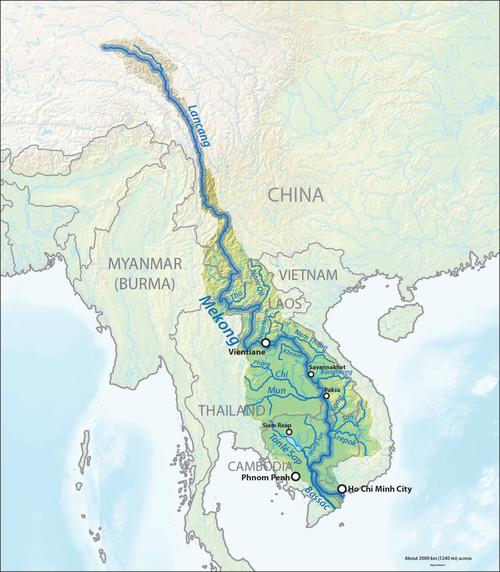Mekong River Commission (MRC) - Decision Support Framework (DSF)
Mekong River Commission (MRC) (http://www.mrcmekong.org) – Decision Support Framework (DSF) – Basin Modelling and Knowledge Base developed under the Water Utilisation Programme (2002-2007)
Rationale
A comprehensive knowledge base and a suite of numerical basin models and modelling tools – collectively known as the Mekong River Commission's Decision Support Framework (Mekong DSF) – were developed under the Water Utilisation Programme of the MRC during the period 2002 to 2007. The objective was to describe changes in river flow and assess the related biophysical, social and economic impacts that may occur as a result of infrastructure development – mainly irrigation and hydropower – and climatic variations within the basin. In this way, IWRM processes in the basin would be supported.
Description
The Mekong DSF was developed between 2002 and 2004 in a fully consultative and participatory manner with the Mekong Basin member states by an international consultant supervised by the MRCS under the Water Utilisation Programme. The DSF was endorsed by the MRC Joint Committee in 2004, so the modelling results are understood to be mutually acceptable to all MRC member countries. The DSF consists of a set of core features and add-ons. The core includes the ability to store the required data and results in a consistent and auditable manner, the ability to transfer these results between the different tools and export quality-assured information in reports to other users, or to a MRC-Master Catalogue. The add-ons include different process models to analyze the behavior of the water and related natural resource systems (whether physical, biophysical, social, or economic), together with the necessary tools to visualize, analyze and report on the results of the process models. Add-ons also include local area models, which may be developed to meet specific needs. Since completion of the DSF in 2004, there have been many applications of the modelling tools, notably including modelling support to the World Bank study in preparation for the Mekong Regional Water Resources Assistance Strategy and in particular, the report Modelled Observations on Development Scenarios in the Lower Mekong Basin, November 2004. The first applications of the modelling tools through these assessments have revolutionized understanding of the potential impacts of water resources development in the Mekong Basin. They represented the first comprehensive assessments of a wide range of basin developments, including mainstream dams in China. An important outcome is that we now understand that the Mekong flow regime is highly robust and that, with good planning and management, there is likely much room for infrastructure developments benefiting all member states and including China.
Lessons learned
- The Mekong DSF is the first suite of such numerical models developed in a fully participatory manner with the MRC member states. It was accepted by all members of the MRC Joint Committee in 2004. Its development and application revolutionized understanding of the management and development of the water and related resources within the basin
- Capacity building has been, and continues to be, an important and challenging element to the introduction and application of the DSF's sophisticated numerical modelling tools throughout their development, application and maintenance.
Replicability
Development and maintenance of the suite of knowledge based and analytic modelling tools comprising the Mekong DSF have been complex, data-intensive, time consuming and costly. Nevertheless, the success of the development and application of the Mekong DSF demonstrates that it can achieve its objectives and be successfully maintained in the long term given the commitment of the member's states and financial partners to do so.
(GWP 2013)
